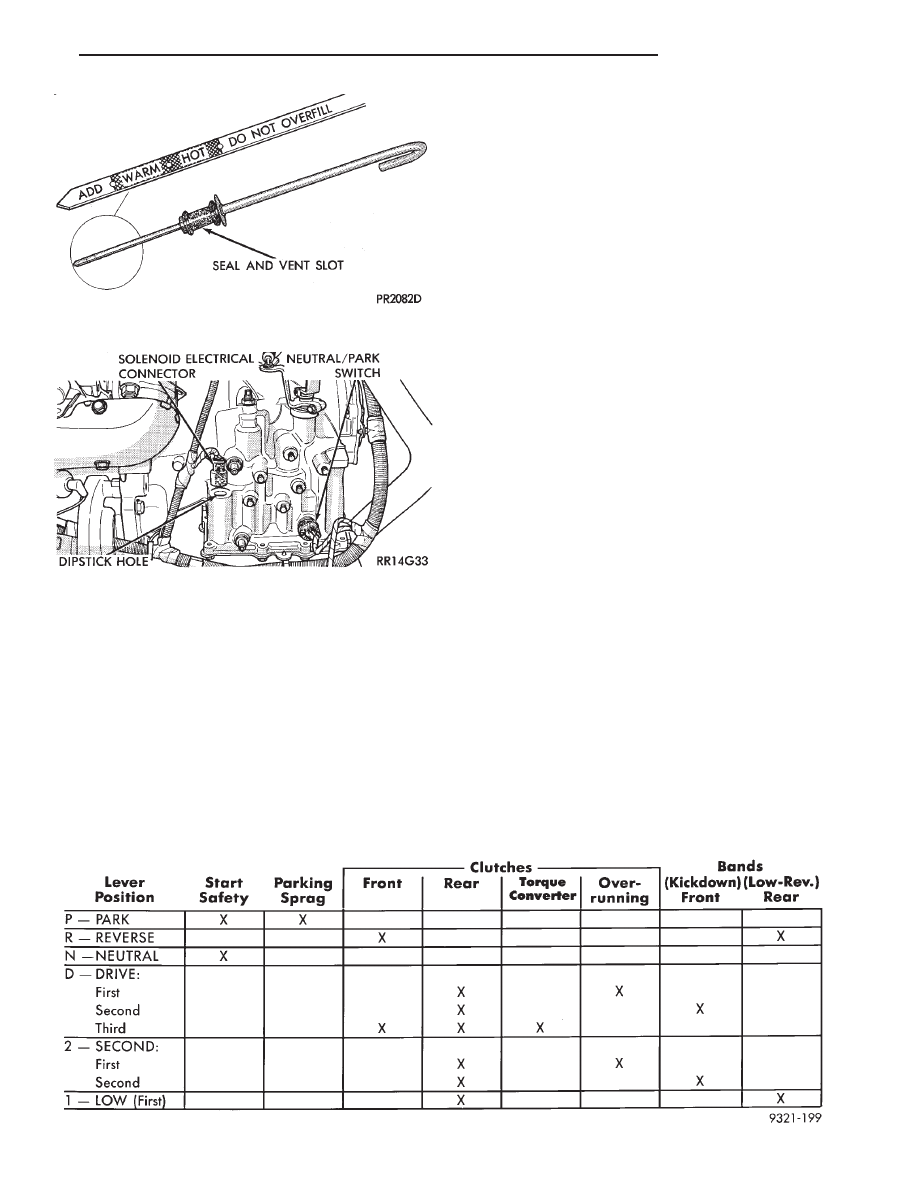Chrysler Le Baron, Dodge Dynasty, Plymouth Acclaim. Manual - part 109

If vehicle operates properly at highway speeds, but
has poor acceleration, the torque converter stator
overrunning clutch may be slipping. If through-gear
acceleration is normal, but high throttle opening is
required to maintain highway speeds, the torque con-
verter stator clutch may have seized. Both of these
stator defects require replacement of the torque con-
verter.
Observe closely for slipping or engine speed flare-
up. Slipping or flare-up in any gear usually indicates
clutch, band, or overrunning clutch problems. If the
condition is far advanced, an overhaul will probably
be necessary to restore normal operation.
The clutch or band that is slipping can be deter-
mined by noting the transaxle operation in all selec-
tor positions. Then comparing which internal units
are applied in those positions. The Elements in Use
Chart provides a basis for road test analysis.
The rear clutch is applied in both the D first gear
and 1 first gear positions. Also the overrunning
clutch is applied in D first gear and the low/reverse
band is applied in 1 first gear position. If the tran-
saxle slips in D range first gear, but does not slip in
1 first gear, the overrunning clutch is slipping. Sim-
ilarly, if the transaxle slips in any two forward
gears, the rear clutch is slipping.
Using the same procedure, the rear clutch and
front clutch are applied in D third gear. If the tran-
saxle slips in third gear, either the front clutch or
the rear clutch is slipping. By selecting another gear
which does not use one of those units, the unit which
is slipping can be determined. If the transaxle also
slips in reverse, the front clutch is slipping. If the
transaxle does not slip in reverse, the rear clutch is
slipping.
The process of elimination can be used to detect
any unit which slips and to confirm proper operation
of good units. Road test analysis can usually diag-
nose slipping units, but the actual cause of the mal-
function usually cannot be decided. Practically any
condition can be caused by leaking hydraulic circuits
or sticking valves.
ELEMENTS IN USE AT EACH POSITION OF THE SELECTOR LEVER
Fig. 1 Dipstick and Transaxle Vent
Fig. 2 Torque Converter Clutch Solenoid Wiring
Connector
Ä
TRANSAXLE
21 - 41